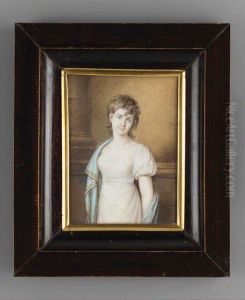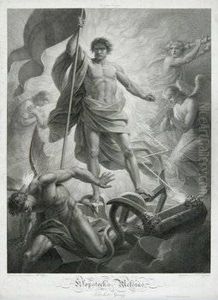Johann Friedrich Leybold Paintings
Johann Friedrich Leybold was a German engraver and painter, born in 1755 in Stuttgart, Germany. His artistic journey began under the guidance of his father, who was also an engraver. Leybold's talent was evident from an early age, and he received formal training in art, which further honed his skills. He attended the Hohe Karlsschule Stuttgart, an elite military academy that also offered an education in the arts, where he was a pupil of Adam Friedrich Oeser, who was an influential artist and teacher during that period.
Leybold's work was characterized by the precision and detail that engraving requires, and he became known for his portraits and historical scenes. His style was influenced by the Neoclassical movement, which was prevalent during his time, and his engravings often reflected the clarity and simplicity associated with Neoclassicism. Leybold was not only a master of the burin but also adept at using stipple engraving techniques, which allowed him to achieve a wide range of tonal effects in his prints.
Throughout his career, Leybold worked on various projects, including book illustrations and portrait engravings of notable figures of his time. His engravings were not limited to portraits; he also depicted mythological and historical subjects. Leybold's contributions to the art of engraving were significant in the context of 18th-century European art, and his works were widely appreciated for their technical expertise and artistic quality.
Johann Friedrich Leybold's influence extended beyond his lifetime, as his engravings were collected and studied by artists and connoisseurs. He passed away in 1838, leaving behind a legacy of work that would continue to be admired for its craftsmanship and elegance. Despite not being a household name today, Leybold's engravings remain an important part of the history of printmaking and provide insight into the artistic trends and cultural values of his era.

